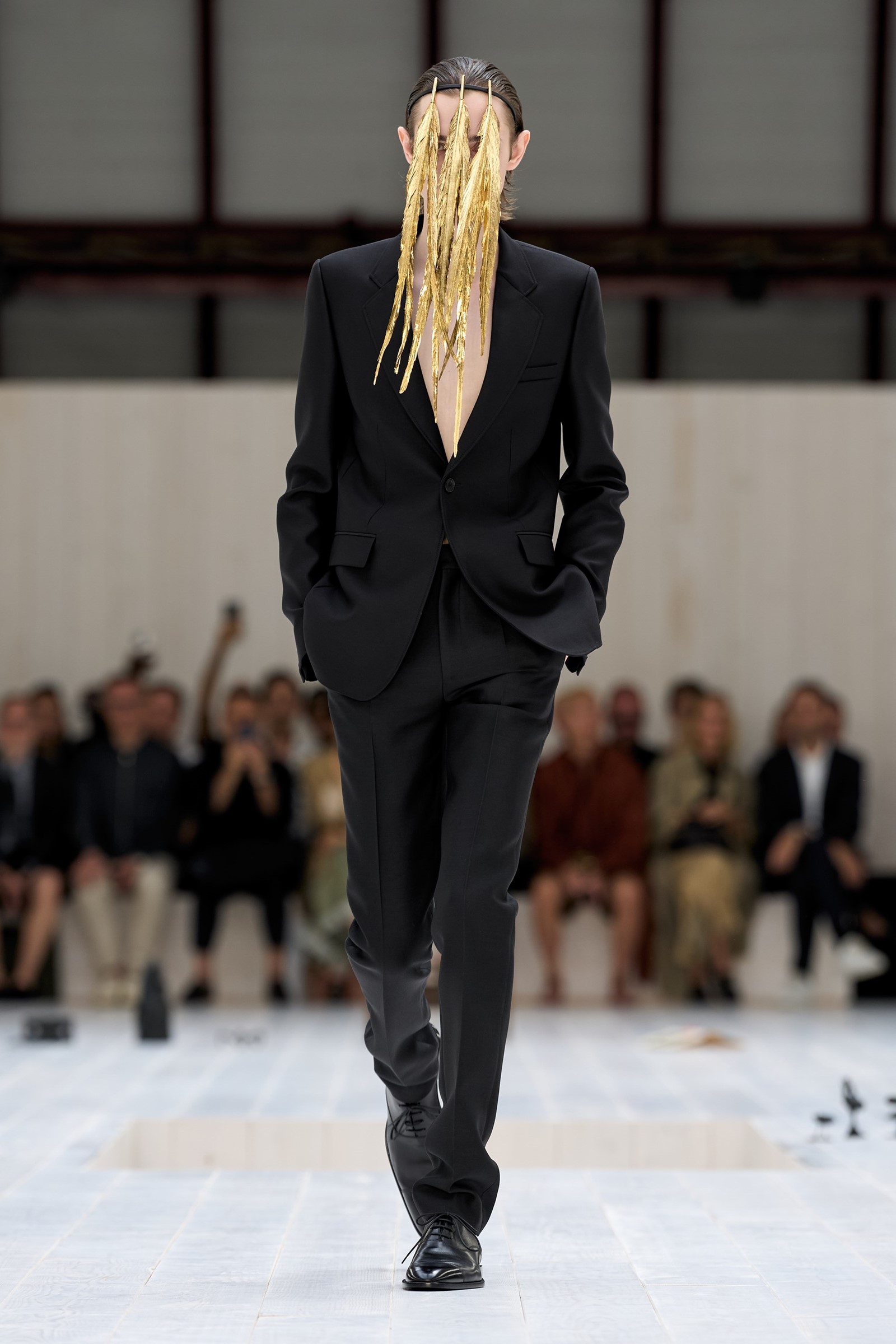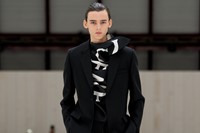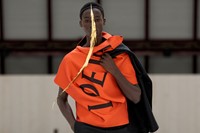Around the Loewe Spring/Summer 2025 show venue were scattered disparate examples of some of the finest and most feverish creativity of the 20th century. Don’t take my word for it: there was a Peter Hujar photographic still-life, slightly uncharacteristic next to his better-known images of lovers and friends; a Paul Thek bronze series of everyday objects and mice, inspired by the Pied Piper of the Brothers Grimm; and the 1966 book of essays Against Interpretation by Susan Sontag, their friend. There was also a Charles Rennie Mackintosh ladderback chair, which was technically designed in 1897, but close enough. It was the Sontag book that stuck – her assertion of the mystery of the art object, and its relationship with a viewer unclouded by criticism.
How about that as a framework through which to consider Jonathan Anderson’s latest show? He titled it A Radical Act of Restraint, which in itself was telling given that Anderson’s shows don’t generally have titles, so actually it gave us more than we usually get. But the clothes themselves underscored that idea, stripped back to bare bones, little embellishment bar gold-dipped pheasant feathers veiling the face, resembling razor-blades. If we’re thinking about creative expression over the past century or so, restraint is what characterises it – modernism in design, abstraction in art, minimalism in clothing. That’s not a definitive statement, but it chimes with what Anderson showed, slim-line suits cleaved close to the body, reflective of male attire since the Industrial Revolution – clothes engineered for work. Other pieces were streamlined to an essence, such as brief tops cropped and fused tight trousers via a belt double-lapping high waist and low hip, or trousers with fullness gathered on a single hip. Tops shimmering in gold for mother-of-pearl were either woven from strips or inlaid like a piece of furniture, in both cases the decoration becoming one with materiality, paring everything back. And the simple act or twisting shirts backwards on the body simplified them, to the initial glance (the buttoned placket was hidden, after all).


“The function of criticism should be to show how it is what it is, even that it is what it is, rather than to show what it means.” That’s what Sontag wrote. And the interesting thing at Loewe was that it wasn’t always immediately possible to know what was what. The materials were humble, granted – straightforward wools, cottons, leather. None of Anderson’s plays on trompe l’oeil, which have become something of a signature during his decade-long tenure at Loewe. But still, how did a single-breasted, narrow-cut coat peel away stiffly from the body? How did leather jut proudly from limbs? This process of reducing, and focusing on precision, trained our attention on details – the cut of garments, the glittering gold hardware affixing bags or fastening outerwear. It is also, perhaps, a writer’s job to assert what we couldn’t see – namely the time it took to achieve Anderson’s precision, the skill and craft behind the construction of these apparently simple clothes, to cut a scoop neck out of a leather biker jacket, or fan another into full volume above narrow trousers.
Then, the other argument is that these clothes need to be experienced in the flesh to fully show how it is what it is, à la Sontag. Which is, perhaps, the whole point of fashion now. To pull you in, excite curiosity, make you want to know more. Anderson always does that.






